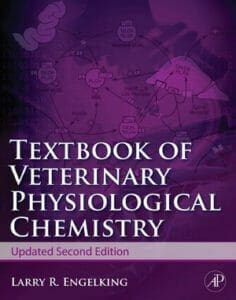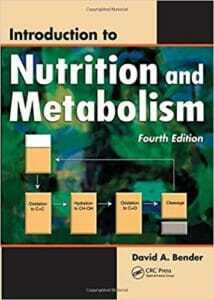Textbook of Veterinary Physiological Chemistry, Updated 2nd Edition
 By Larry Engelking
By Larry Engelking
Textbook of Veterinary Physiological Chemistry, Updated 2nd Edition PDF is Written in a succinct style with each chapter including an overview summary section, numerous illustrations for best comprehension, and end of the chapter questions to assess understanding, The Textbook of Veterinary Physiological Chemistry offers broad coverage of biochemical principles for students studying veterinary medicine. Since first year students come into programs with different scientific backgrounds, this text offers students foundational concepts in physiological chemistry and offers numerous opportunities for practice. Bridging the gap between science and clinical application of concepts, this textbook covers cellular level concepts related to the biochemical processes in the entire animal in a student-friendly, approachable manner.
- Updated four color interior design
- Coverage of cellular level concepts related to biochemical processes in entire animal
- Written in a succint manner for quick comprehension
- Relevant biochemical and physiologic concepts integrated in an up-to-date, accurate and reliable fashion
- Succinct content for quick comprehension
- Numerous instructional figures and tables
- Helpful learning objectives and multiple choice questions at the end of each chapter
| File Size | 17 MB |
| File Format | |
| Download link | Free Download | Become a Premium, Lifetime Deal |
| There is a Newer Edition of This Book | |
| Support & Updates | Contact Us | Broken Link |
| Join Our Telegram Channel |  |
| More Books: | Browse All Categories |


![Premium Vet Study Notes + Question Bank [Updated Frequently] Premium Vet Study Notes + Question Bank [Updated Frequently]](https://www.vet-ebooks.com/wp-content/uploads/2017/02/Premium-Vet-Study-Notes-Question-Bank-300x200.png)
![Ettinger’s Textbook of Veterinary Internal Medicine 9th Edition [PDF+Videos] Ettinger’s Textbook of Veterinary Internal Medicine 9th Edition [True PDF+Videos]](https://www.vet-ebooks.com/wp-content/uploads/2024/10/ettingers-textbook-of-veterinary-internal-medicine-9th-edition-235x300.jpg)









![Ettinger’s Textbook of Veterinary Internal Medicine 9th Edition [PDF+Videos] Ettinger’s Textbook of Veterinary Internal Medicine 9th Edition [True PDF+Videos]](https://www.vet-ebooks.com/wp-content/uploads/2024/10/ettingers-textbook-of-veterinary-internal-medicine-9th-edition-100x70.jpg)

![Textbook of Veterinary Diagnostic Radiology 8th Edition [PDF+Videos+Quizzes] Thrall’s Textbook of Veterinary Diagnostic Radiology, 8th edition PDF](https://www.vet-ebooks.com/wp-content/uploads/2019/09/textbook-of-veterinary-diagnostic-radiology-8th-edition-100x70.jpg)






